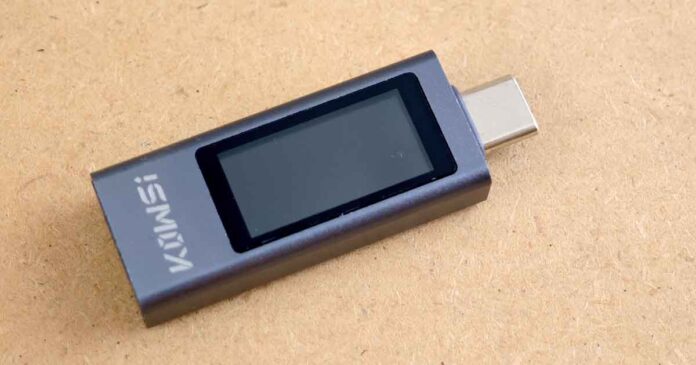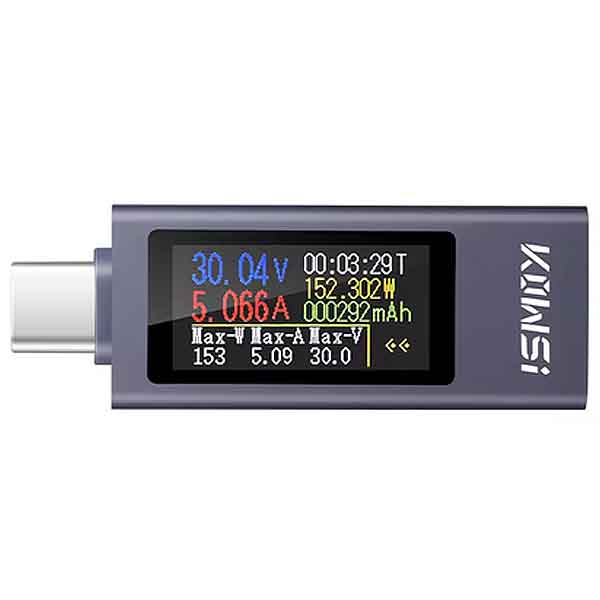The KWS-2302C current and voltage monitor I recently got is now one of my favorite tools for testing all the new retro emulator handhelds and chargers that come my way. If you need a solid USB-C power tester for the USB-C devices you have at home, this one is definitely for you!
This web portal is reader-supported and is part of the AliExpress Partner Program, Amazon Services LLC Associates Program, and the eBay Partner Network. When you buy through links on our site, we may earn an affiliate commission.
First – The Specs
What Can You Use a USB-C Power Tester Like This For?
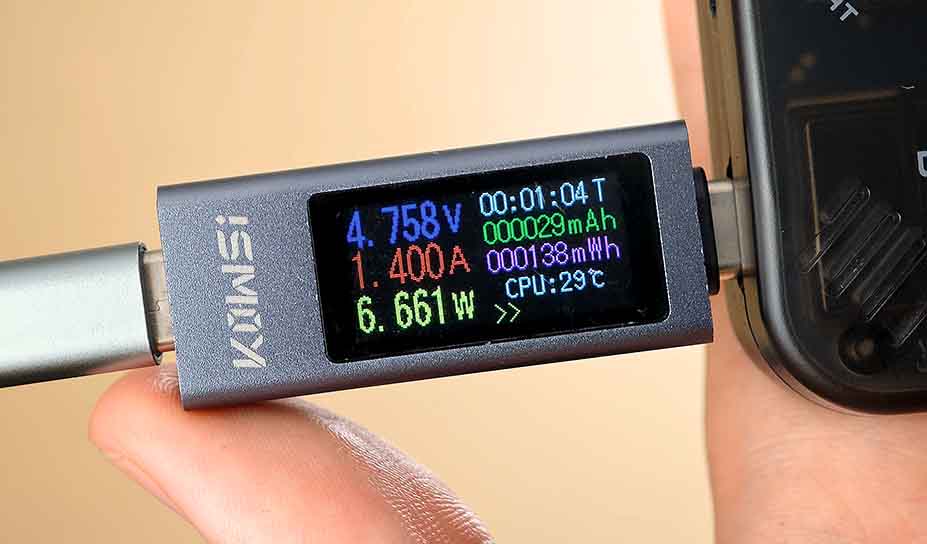
The KWS-2302C is a small, inline USB-C power meter that shows you exactly what’s happening between your charger and your device in real-time. This compact tool can monitor various electrical parameters, including voltage, current, power, and even the total energy transferred over a single charging session.
Using a device like the KWS-2302C, you can do several things, including:
- Monitoring power consumption of any device powered using a USB-C power supply.
- Tracking maximum and real-time power and current values during the charging process.
- Checking if the chargers you have on hand live up to their advertised specs.
- Troubleshooting charging or power issues on your devices using different chargers and USB cables.
- Measuring an approximate capacity of the devices you’re charging and evaluating the charging time.
- Or, if you’re into retro emulator handhelds like me, ensuring that your pocket devices are receiving proper voltage and current during charging, to avoid damaging them.
Whether it’s using the meter to simply see if your smartphone is drawing any power from your charger if it’s seemingly refusing to charge, or seeing if your aftermarket charger really does support fast charging, this is a very useful gadget to have on hand.
How To Read The Info on the KWS-2302C’s Display?
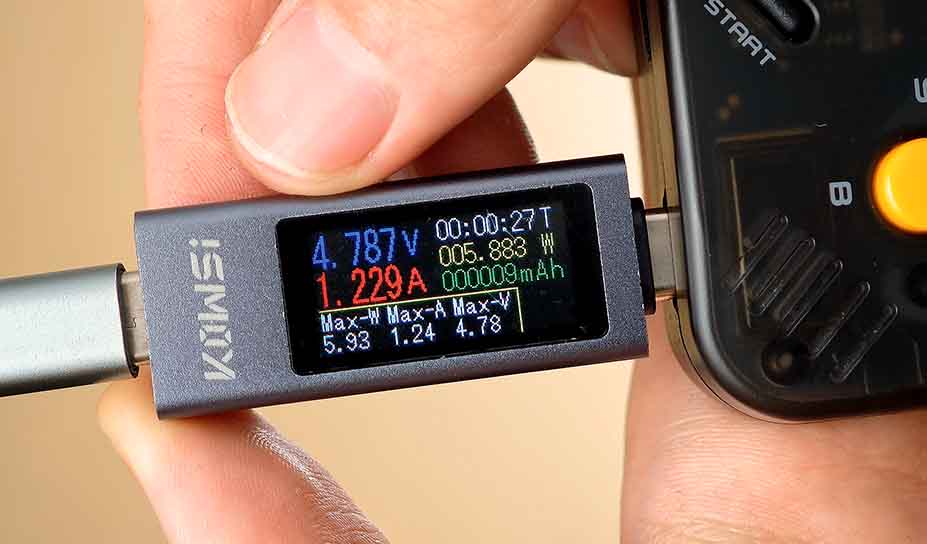
Here is what all the displayed info means. Pressing the button on the back, you can cycle through two different display pages (three on the KWS-2303C version, as it also features a power-over-time graph display), and a double-press rotates the screen for convenience.
- V (Voltage): This is the most critical number for safety. It shows the voltage being supplied by the charger. For many retro handhelds, this will be close to 5V.
- A (Amperage/Current): This indicates how much electrical current your device is drawing from the charger. This number will fluctuate depending on the device and its battery level.
- W (Wattage/Power): This is the total power being delivered, calculated by multiplying Volts and Amps (V x A).
- mAh (milliamp-hours): This value accumulates over time and measures the total capacity delivered to your device.
- mWh (milliwatt-hours): Similar to mAh, this measures the total energy transferred.
- T (Time): Shows how long the device has been charging (you can reset this timer by long pressing the button on the back of the dongle).
- °C (Temperature): Displays the internal temperature of the tester itself. Not very useful, but still nice to have.
KWS-2302C Tested With Three Different Handhelds, and a 18W Smartphone Charger
To test the power meter out, I decided to quickly pick up a few of my handhelds and check how much power they draw when charged according to our dongle. All the devices were charged while turned off, using a generic 18W smartphone charger with USB PD support.
Miyoo Mini Plus
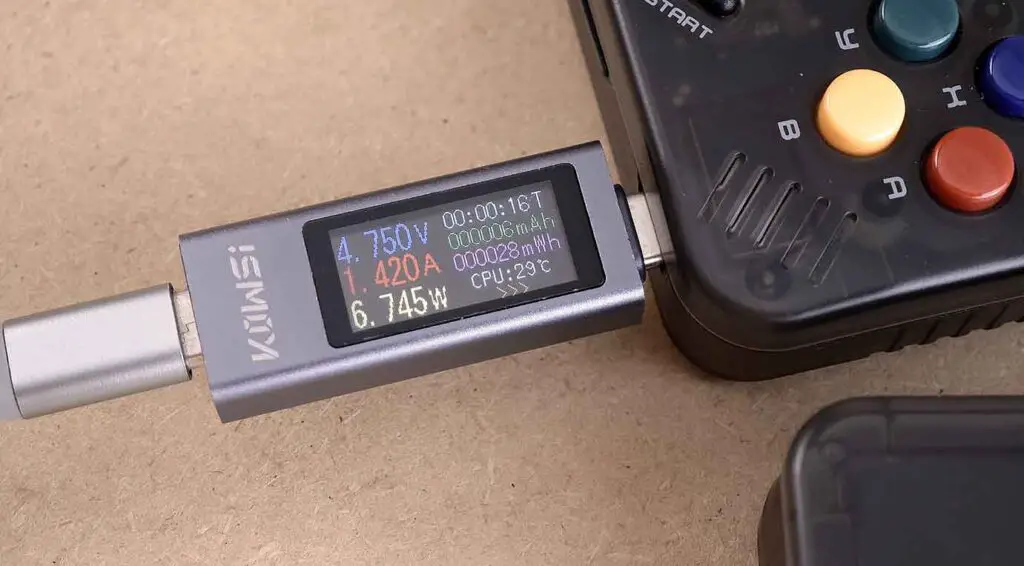
With the Miyoo Mini Plus, the charging parameters were about ~4.75V, 1.42A, 6.74W on average.
R36S
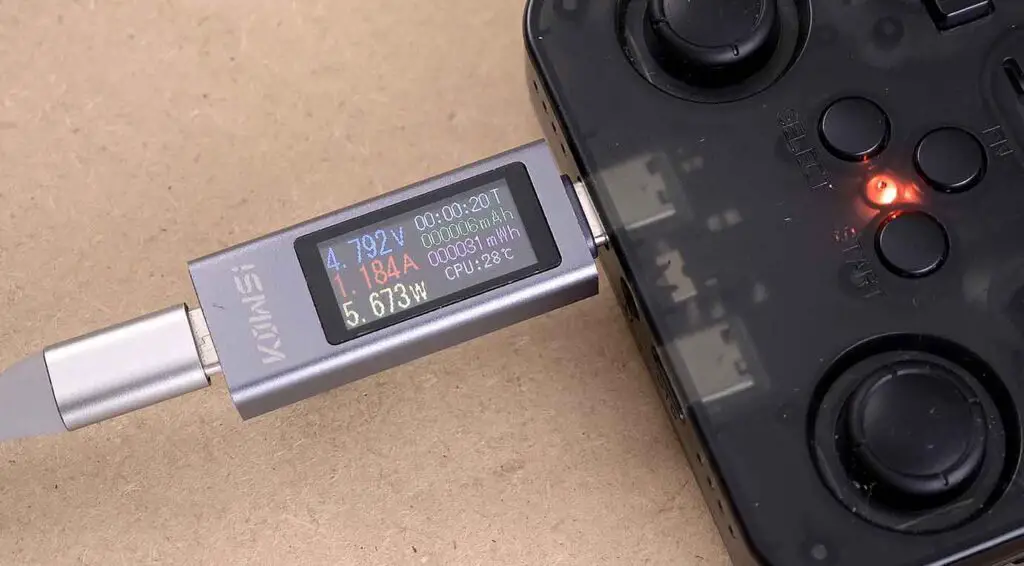
The R36S yielded values of just about ~4.79V, 1.18A, 5.67W.
Powkiddy V90S
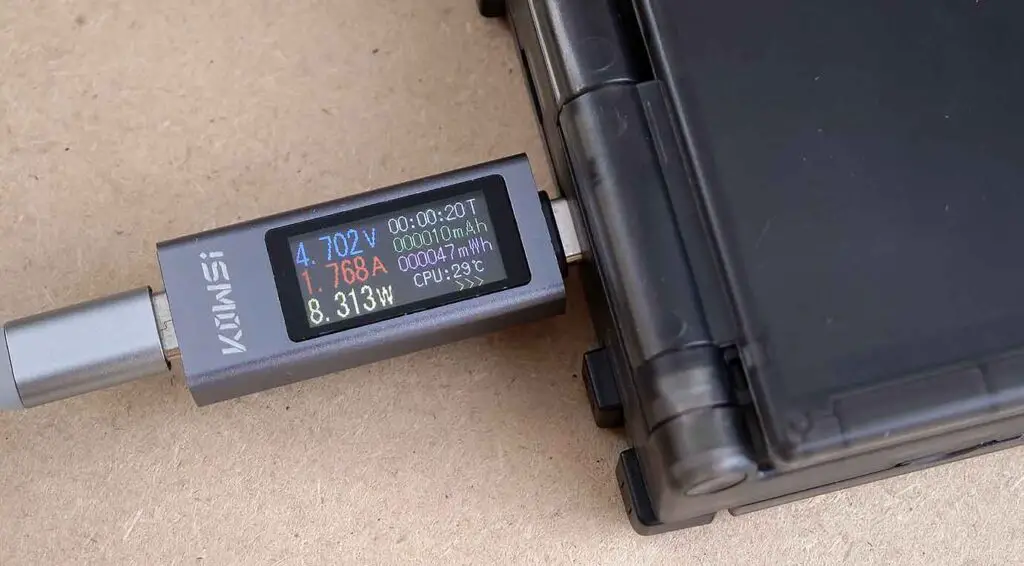
And the Powkiddy V90S pulled in just a little bit more power, at an average of ~4.7V, 1.76A, and 8.31W.
A Slight Upgrade – The KWS-2303C
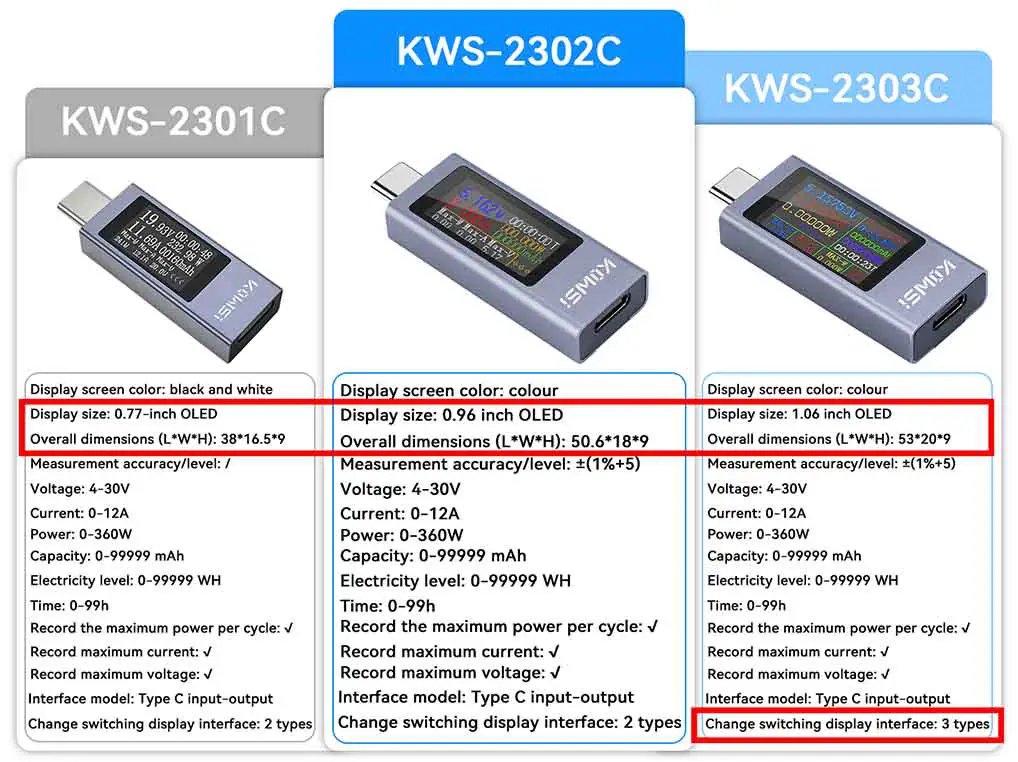
While the KWS-2302C is great, there is already an updated version (the KWS-2303C) and a slight downgrade (the KWS-2301C). The KWS-2301C isn’t worth considering due to the small price difference and its lack of a color display.
The only meaningful difference between the 2302C and 2303C models is a larger display and chassis, as well as the access to the third display mode with a neat power-over-time graph that I’ve already mentioned above.
If I got you interested, you can get either of the devices mentioned here, in the very same AliExpress store I got them from right here. Thank you for reading, and I hope to see you next time!

